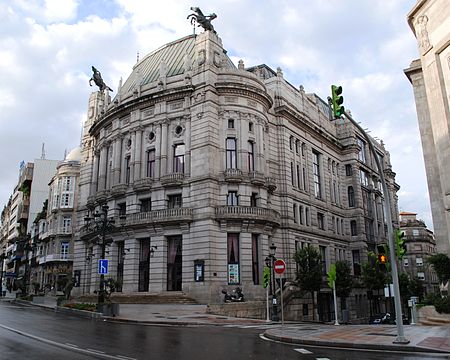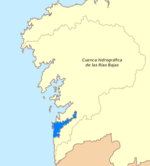Garcia Barbon Theatre
Buildings and structures in the Province of PontevedraOpera houses in SpainTheatres completed in 1900Theatres completed in 1927Vigo

Garcia Barbon Theatre, also known as Afundacion Vigo Theatre (Galician: Teatro Afundación Vigo) for sponsorship reasons, is a 994-seat performing arts center in Vigo, Spain. Designed by Spanish architect Antonio Palacios, it was built in 1927 on the site formerly occupied by the Rosalia de Castro Theatre, destroyed by fire in 1910.
Excerpt from the Wikipedia article Garcia Barbon Theatre (License: CC BY-SA 3.0, Authors, Images).Garcia Barbon Theatre
Rúa Darío Álvarez Blázquez, Vigo O Berbés
Geographical coordinates (GPS) Address External links Nearby Places Show on map
Geographical coordinates (GPS)
| Latitude | Longitude |
|---|---|
| N 42.237902777778 ° | E -8.7233888888889 ° |
Address
Teatro Afundación
Rúa Darío Álvarez Blázquez
36203 Vigo, O Berbés
Galicia, Spain
Open on Google Maps










